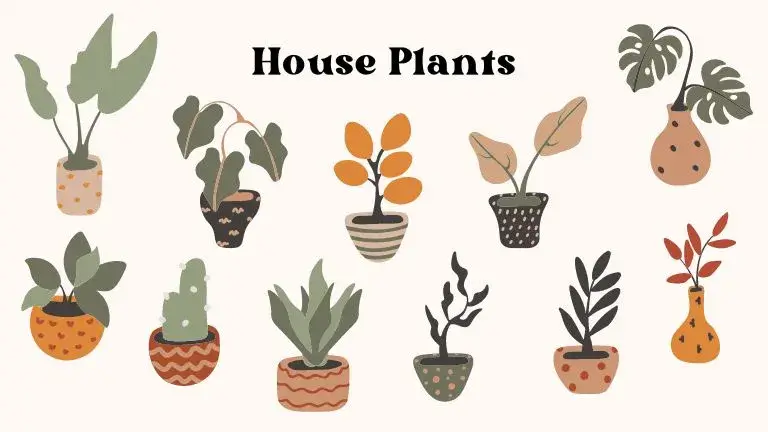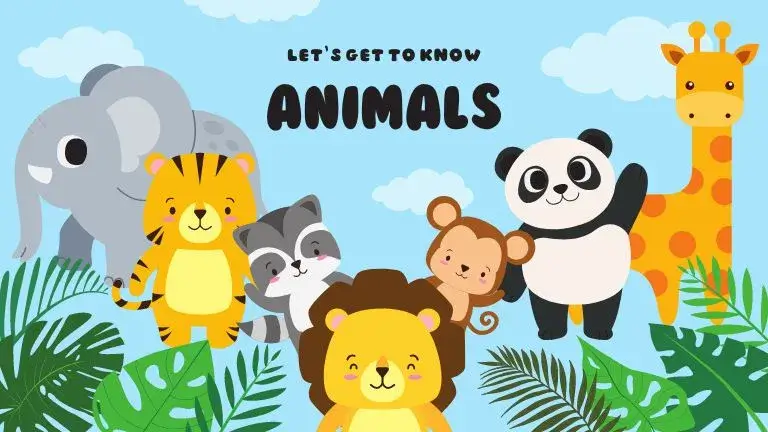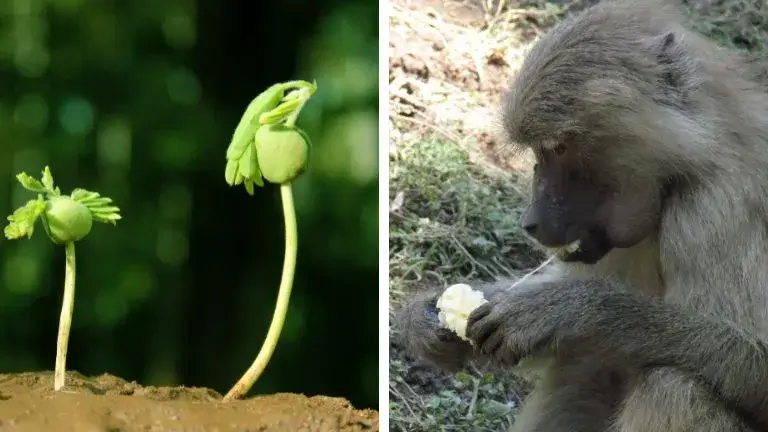The difference between plants and animals is that plants can make their own food while animals rely on other living organisms for their food.
Our environment would be empty if there were no animals and plants around, no birds singing on the trees, no birds chirping, no honeybees, no butterflies, no dogs, and no cats.
The earth needs plants and animals because we gain much from them in the form of food and medicines. We obtain our meat from animals such as cows, fowl, chicken, goats, and plants. We also obtain medications from plants.
We have also given definitions of plants and animals below for your ease of understanding.
Table of Contents
Plants

Plants are living organisms that make up most of the world’s surface and can produce nourishment.
The Earth has more than 18,000 types of edible plants, but only 30 species provide 90 percent of the food’s humans consume.
Important Parts of Plants
The important parts of a plant are leaves, buds, flowers, stem, fruit, and roots.
1. Buds: The buds that guard the developing flower or leaf against harmful elements.
2. Flower: The most attractive part of a plant, flowers are often colorful and attract bees and other insects. Plants reproduce by means of their flowers.
3. Leaf: The leaf is the most crucial part of a plant. It contains the green pigment chlorophyll, which absorbs sunlight and converts it into food.
4. Fruit: A fruit is a part of a plant that contains extra food and seed; some fruits may not be sweet and edible, but they are all still classified as fruits, and they sometimes help a plant in dispersing their seed.
5. Steam: The stem supports the plant like a pillar. It keeps the plant upright and transports nutrients, water, and minerals from the roots to the various portions of the plant.
6. Roots: The roots serve as both a base and a means of absorbing water and minerals from the soil.
The root ensures that the plant maintains stability in the soil when the winds are too strong.
Animals

Animals are living organisms that depend on other animals and plants for their food.
Animals can be useful to humans as well. Man depends on animals for food, such as milk, eggs, and meat.
For instance, we receive chicken and eggs and also from sheep that also produce wool and meat from newborn cows who offer milk.
We should all value animals. The surroundings in which animals live and develop is known as the environment, and animals play a significant part in our lives.
We can keep pets like dogs, cats, and parrots in our houses and eat meat from many other animals, including cows, goats, and chickens.
Humans domesticate animals for their good. In addition to milk and meat, we also use their skin to manufacture leather for various products, including shoes, purses, and saddles.
Important Parts of Animals
An animal’s body is composed of the same parts as a human’s, with a few exceptions, including a tail, long hairs, and the fact that an animal has four legs as opposed to two, while a human only has two.
The function of the ear, mouth, eyes and many other parts are the same in humans and animals, with the eyes used for vision, the mouth for eating, and the ear for hearing.
Difference Between Plants and Animals Life

Even though it is simple to differentiate between plants and animals, each has unique characteristics of their own. There are also many differences between plants and animal life.
Plants and animals can be differentiated from one another based on a variety of features.
Mobility Differences Between Plants and Animals
Plants cannot travel from one area to another. Plants move in discrete ways, such as when flower petals open, whereas animals go out in the open, often in search of food and shelter.
While animals that freely travel from one location to another.
Nutritional Differences Between Plants and Animals
Because chlorophyll is present in plants, they may produce their own nourishment and are referred to as autotrophs.
Animals are heterotrophs because they either directly or indirectly rely on plants for their diet.
Differences Between Plants and Animals Methods of Food Storage
The difference between plants and animals is that plants lack a digestive system. Starch is used to store food for later use.
Whereas animals have an effective digestive system that helps in food digestion and nutrient absorption.
Differences in How Plants and Animals Breathe
Through their stomata, plants absorb carbon dioxide and release oxygen into the atmosphere.
Animals use their lungs and skin to absorb oxygen and release carbon dioxide into the atmosphere.
Differences Between Animal and Plant Reproduction
Plants can reproduce asexually through techniques such as budding, vegetative methods and spores.
While animals reproduce sexually, some smaller animals, such as algae, reproduce asexually.
Differences in How Plants and Animals Respond
Plants respond to stimuli like touch and light, but because they lack sense organs, they are less sensitive.
Animals are very sensitive because they have a healthy nervous system and can react to any input in a matter of seconds.
Difference Between Plants and Animal Cell
The difference between plant and animal cells is that animal cells are smaller than those of plants. Plant cells are rectangular in shape, but animal cells are irregular.
Relationship Between Plants and Animals Life

Although there are many differences between plants and animals, we cannot deny that they are all dependent on one another. Animals and plants depend on each other to live and grow.
For example:
Plants give animals oxygen to breathe as plants take in carbon dioxide and give out oxygen in the atmosphere. Animals breathe in oxygen and release carbon dioxide into the atmosphere, which plants use to breathe.
Therefore, there is a mutual giving and taking between plants and animals.
Similarities Between Plants and Animals
Being living organisms, both plants and animals have some similarities and differences.
- Cells exist in both plants and mammals.
- To survive, they both need air and water.
- Both of them require energy to survive.
- Animals and plants can both reproduce.
- They can both grow and change.
Key Difference Between Plants and Animals
Highlighting the key differences between plants and animals in the following table:
| Plants | Animals |
| Plants contain chlorophyll. | Animals lack chlorophyll. |
| Plants are autotrophs. | Animals are heterotrophs. |
| Plants are limited in their ability to move around. | Animals can easily locate from one place to another. |
| Plants breathe through the stomata. | Animals breathe through their lungs. |
| Plants take in carbon dioxide and give out oxygen. | Animals breathe in oxygen and release carbon dioxide. |
Conclusion
The difference between plants and animals is that plants are green and can produce their own food by using sunshine, water, and air.
While on the other hand animals are living things that eat organic matter and are known to have specific systems including the nervous system, reproductive system, and sense organs that set them apart from plants.
Read more: What is the Difference Between PCT and DCT?


